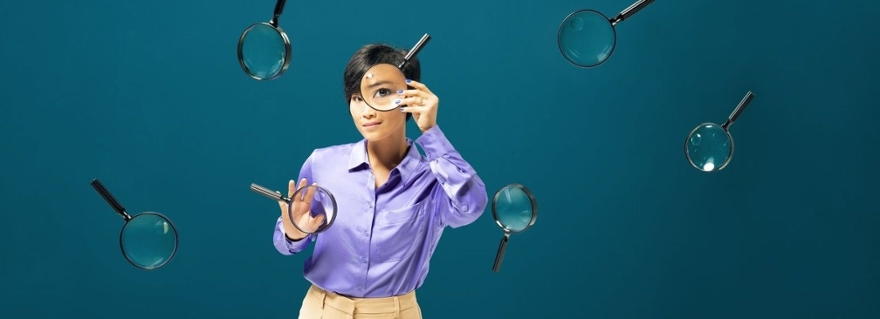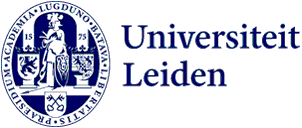
Fourteen Leiden University researchers receive Vidi grant
The Dutch Research Council (NWO) has awarded Vidi grants to 14 Leiden researchers. This grant of a maximum of 850,000 euros will enable them to start a new research group and develop their own line of research over the next five years.
The Vidi grants are awarded to experienced researchers who have conducted several years of research since receiving their PhD. Together with the Veni and Vici grants, the Vidi grants are part of the NWO Talent Programme, which aims to provide space for pioneering, curiosity-driven research. This year, a total of 149 researchers have been awarded a Vidi grant. The 14 projects with researchers from Leiden are listed below.
Judicial guardians: representing the legally incapacitated in early modern English law and literature (1542-1646)
Lotte Fikkers (Centre for the Arts in Society)
English plays from the 16th and 17th centuries often gave centre stage to orphans, the intellectually disabled and their guardians. The reason for this was the prevalence of abuse that accompanied guardianship. Custody over orphans and the intellectually disabled, and thus control of their assets, could be sold to the highest bidder by the responsible court of law. Such power was often abused. This project reads plays in conjunction with legal records in order to give voice to these most vulnerable individuals, as well as to re-interpret even the most canonical of plays featuring this type of (abusive) guardianship.
Sex, care and robots
Eduard Fosch Villaronga (Institute for the Interdisciplinary Study of the Law)
Sexuality is a fundamental part of being human– but for many people with disabilities, it remains overlooked, unsupported and surrounded by stigma. This project responds to that long-standing neglect. Through interviews, surveys, legal research and technology analysis, it explores how care systems, policy and technological innovation can better support intimacy, autonomy and pleasure. Working in close collaboration with the disability community, policymakers and tech developers, it envisions a simple but urgent future: a future where sexual rights are recognised, respected and realised – for everyone.
Which prediction algorithms improve health outcomes?
Nan van Geloven (Leiden University Medical Center)
This project will develop statistical methods to determine the impact of a clinical prediction algorithm before implementation, without requiring the collection of more data. The new method takes into account the causal effects of treatment decisions that would change based on the algorithm, in order to determine the algorithm’s effect on health outcomes. This will help select promising algorithms for implementation in clinical practice and identify the individuals who will benefit most from them.
Leveraging language, proclaiming power: linguistic politics in early colonial North America
Alisa van de Haar (Centre for the Arts in Society)
In multilingual societies, language choices influence power dynamics. There is, however, no overarching theory that fully captures the complex relationship between language and power. This project aims to develop such a theory by examining the interplay between language choices and power balances in seventeenth-century North America. In New Netherland, New France, Virginia and New England, linguistic decisions were constantly made in interactions between European colonists, enslaved West Africans, Indigenous communities and European colonial authorities. Investigating these encounters provides new insights into historical multilingualism, which will serve as the foundation for a theoretical model of the interaction between language and power.
Levitated magnets with a twist and a spin: towards macroscopic quantum superpositions
Bas Hensen (Leids Institute of Physics)
Quantum theory describes the world of atoms and helped us develop lasers. The theory of gravity – general relativity – describes the motion of stars and helps us understand the origin of the universe and GPS. Somewhere in the middle, the theories must meet. By levitating small magnetic particles, about 1/10th the width of a human hair, and coupling their twisting motion to electron spins in diamond, Hensen will prepare quantum superposition states of particles that consist of billions of atoms, large enough to make their own gravity. Through this, he hopes to learn, for example, whether gravity itself is quantum.
Go with the flow: mapping how water flushes the human brain
Lydiane Hirschler (Leiden University Medical Center)
A good night’s sleep does more than just refresh the mind: it helps flush waste from the brain by moving water through its drainage pipes. But how exactly does this ‘clean-up’ process work in humans, and what happens when it slows with ageing or diseases like Alzheimer’s disease, where waste clogs the drain? Hirschler will use advanced magnetic resonance imaging to track water, the waste carrier, as it moves through the brain. By exploring how sleep, ageing and physiological challenges influence this process, Go-with-the-flow will uncover new ways to improve brain health and fight diseases linked to waste buildup.
DISMANTLE: disability and mobility aids in Northwestern-European textual, literary and artistic evidence, 1100-1500
Krista Milne (Centre for the Arts in Society)
Hundreds of textual and artistic representations of disability aids survive in manuscripts from medieval Europe. Since each of these representations is a valuable witness to the socio-cultural values behind its production, this body of evidence offers unmatched insight into medieval attitudes toward disability, including ones that hold relevance today. Yet most of these representations have not been studied, or have been studied in only a limited way. The goal of DISMANTLE is to transform a valuable but often overlooked area of disability studies through the first large-scale study of medieval artistic and textual representations of disability aids from Northwestern Europe.
HEALECTRO: design principles for self-healing electrocatalysts
Rik Mom (Leiden Institute of Chemistry)
The dissolution of electrocatalysts during operation is one of the key limiting factors in electrochemical technologies such as green hydrogen production and the conversion of CO2 to chemicals. Self-healing electrocatalysts have the potential to mitigate this degradation process: by balancing electrocatalyst dissolution with redeposition reactions, an equilibrium is created which, in principle, endows the electrocatalyst with an infinite lifespan. In HEALECTRO, Mom will combine high-throughput experimentation and advanced X-ray spectroscopies to unravel how the structure of self-healing catalysts can be steered to combine this long lifespan with efficient catalysis.
Formal games for solving hard quantum control problems
Evert van Nieuwenburg (LIACS & LION)
Quantum technology has the potential to transform society, with better sensors (for MRI, for example) and new computers for healthcare breakthroughs. At the same time, developing quantum technology has led to some of the most challenging problems for humans. AI provides solutions to those hard problems, though training it is a challenge itself. Researchers can make better AIs by having them play against each other, and by structuring the problem so that it resembles a game. In this project, more game-like ideas will be used to make AIs better at controlling quantum systems.
Grammars of space and time: language, culture and cognition in Ethiopia’s Omo Valley
Sara Petrollino – (Leiden University Centre for Linguistics)
This project will explore how people think and talk about space and time – two essential dimensions of human life. Focusing on communities in Ethiopia’s Omo Valley, it will investigate how language, culture, and environment shape different ways of understanding spatial and temporal relations. The study will combine field-based language documentation and cognitive research to uncover how diverse societies describe space and time in everyday life. As these ways of speaking are increasingly at risk, the project will help preserve unique knowledge systems and offer new insights into the richness and flexibility of human thought.
Anatomy matters! Tailoring immunotherapies to the tumour microenvironment in lymphomas
Joost Vermaat (Leiden University Medical Center)
Lymphomas can develop in any organ, yet current treatments often overlook organ-specific biology, leading to suboptimal outcomes. As a hemato-oncologist, Vermaat aims to investigate how organ-specific features influence disease progression and treatment response in diffuse large B-cell lymphoma (DLBCL). He will identify novel immune-molecular subtypes that predict therapy responses and develop a machine-learning tool, ORACLE, to guide personalised treatment decisions. By integrating genomic, immune and spatial data, ORACLE will improve predictions for chemo-immunotherapies and innovative immunotherapies, ultimately refining treatment approaches and improving survival outcomes for high-risk lymphoma patients, paving the way for personalised medicine in lymphoma care.
Unveiling the fuel for star formation gas across cosmic history
Matus Rybak (SRON, Leiden Observatory)
Did stars in the early Universe form like they do today? Early galaxies formed stars much faster than those we see now. To understand this, Rybak will study the dense, cold gas that will collapse into stars, tracing it using complex molecules – especially cyanides. Using large radio telescopes and gravitational lensing – Nature’s magnifying glass, he will detect cyanides and dense gas in over 100 early galaxies. These observations will provide new insights into how stars formed in the young Universe, helping uncover the physical conditions that fuelled such rapid star formation.
Escalation of sanctions over the life-course: determinants, consequences and inequality
Hilde Wermink (Institute of Criminal Law and Criminology)
Each year, millions of people undergo criminal sanctions, and those sanctioned typically experience multiple sanctions throughout their lives. Scientific knowledge about the impact of sanctions over the life-course is very limited since prior research has almost exclusively focused on sanctions as isolated events. This project will therefore examine multiple and diverse types of sanctions imposed throughout the life-courses of both juveniles and adults using a multi-method approach. The new knowledge generated by this project will contribute to a better understanding of the intended and unintended consequences of sanctions and the development of a more effective and equal criminal justice system.
Liver cells: the first detector and defender against malaria parasites?
Annie Yang (Leiden University Medical Center)
Malaria is a devastating mosquito-borne disease that kills over 0.5 million people worldwide annually and for which there is no effective vaccine. Publications show that the initial step of the infection, i.e. parasites’ seven-day development in the liver, to be of utmost importance in generating lasting immunity. This proposal shines the spotlight on the liver cells (hepatocytes) that play host to these parasites but are better known for their functions in nutrient acquisition and metabolism. The researchers will investigate how hepatocytes detect the parasites, what responses are generated and the impact on the success of infection in the next parasitic encounter.
